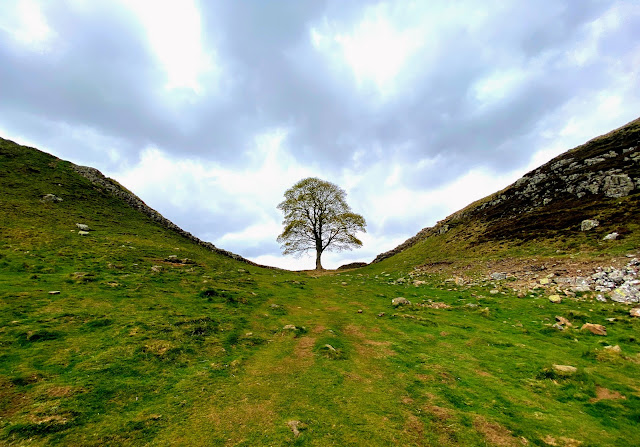Sycamore Gap and the "Robin Hood Tree" on Hadrian's Wall

Update: It is with great sadness that I have to add to this post that the beautiful Sycamore tree that stood in the gap was felled sometime during the overnight on Thursday, September 28th, 2023. Needless to say there has been an outpouring of both sadness and rage all over the world at the senseless and cruel loss of this iconic tree and I am right there with them. I am so glad that I had the opportunity to visit it when I did. Nestled within a gap along the Great Whin Sill, Sycamore Gap is a natural amphitheater located on Hadrian's Wall in Northumberland, England between Milecastle 39 and Crag Lough, about 2 miles west of Housesteads Roman Fort . This section of the 73-mile wall follows the edge of a cliff and has several sharp dips in it caused by melting glacial waters - the tree occupies one of those dips. The wall and adjacent land, including the site of the tree, is owned by the National Trust and is one of the most popular tourist destinations in the area not just f
